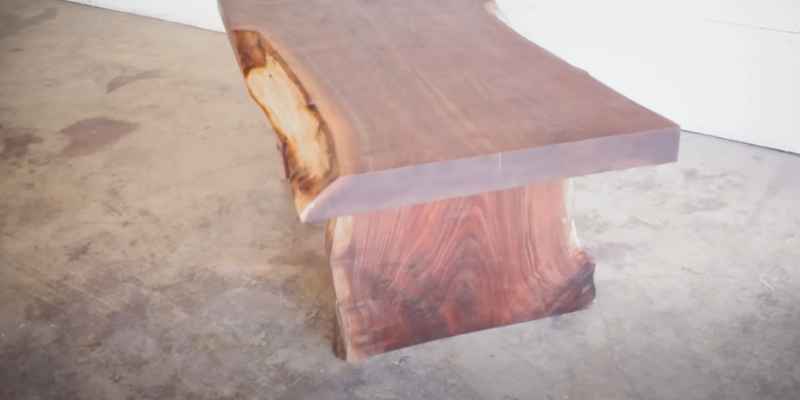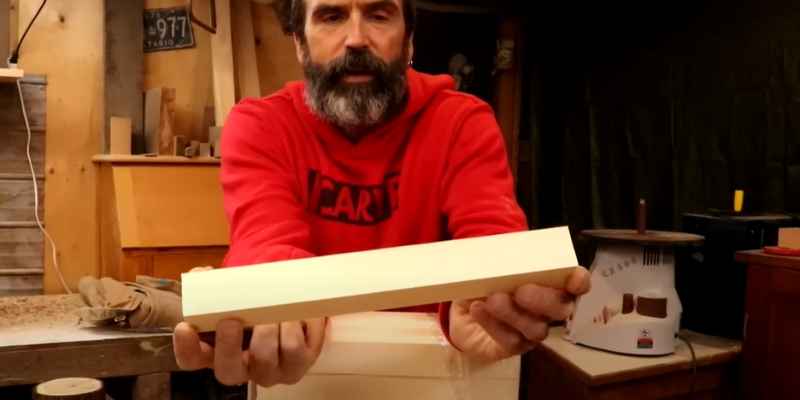Poplar is lighter and softer than pine. It is commonly used for furniture, molding, and interior projects.
Pine is stronger and more durable than poplar, making it suitable for outdoor and structural applications, such as flooring and construction projects. Poplar and pine are two commonly used types of wood in various applications. Understanding their differences in terms of characteristics and uses can help you make informed decisions for your projects.
We will delve into the specifics of poplar and pine, highlighting their unique features and applications. Whether you are a DIY enthusiast or a professional in the woodworking industry, this guide will provide you with the necessary knowledge to choose the most suitable wood for your specific needs. So, let’s explore the differences between poplar and pine and how to best utilize them in your projects.
What Makes Poplar And Pine Popular?
Versatility
Poplar and pine are both widely popular wood species due to their versatility. They can be used in a variety of applications, making them a favorite choice for many homeowners, DIY enthusiasts, and professional carpenters.
Poplar is known for its light color and smooth texture, which makes it ideal for painting and staining. It can be easily shaped and carved, allowing it to be used for cabinets, furniture, trim work, and even musical instruments.
Pine, on the other hand, is known for its rustic charm and natural beauty. It’s commonly used for flooring, paneling, and furniture, particularly in log cabin or country-style homes. Due to its durability and resistance to decay, pine is also suitable for outdoor projects like decking and fencing.
Availability
When it comes to availability, both poplar and pine are widely accessible. They can be found in local hardware stores, lumberyards, and online retailers, making them easily obtainable for any woodworking project.
Poplar trees are commonly found across North America and Europe, while pine trees have a worldwide distribution. This wide range of availability ensures that these wood species are never in short supply, making them a convenient choice for carpenters and homeowners alike.
Affordability
One of the key factors that contribute to the popularity of poplar and pine is their affordability. Whether you’re on a tight budget or looking for cost-effective alternatives, both poplar and pine are pocket-friendly options.
Poplar typically costs less than other hardwoods, making it an economical choice for those wanting the look of hardwood without breaking the bank. Pine, on the other hand, is often more affordable than other softwoods like cedar or redwood, making it an attractive option for construction and woodworking projects.

Characteristics Of Poplar Wood
Poplar wood stands out from pine with its lighter color and smoother texture. It is also known for its lower cost, making it a popular choice for furniture and woodworking projects.
Poplar wood is known for its versatility and wide range of uses in various industries, including furniture making, cabinetry, and even musical instruments. Understanding the characteristics of poplar wood is essential for anyone considering using this popular material. In this section, we will delve into the appearance, durability, and workability of poplar wood to provide a comprehensive overview for those interested in this timber option.
Appearance
Poplar wood features a pale, creamy white to yellowish color that tends to darken slightly with age, giving it a more warm and inviting appearance. While poplar is not known for its pronounced grain patterns, it typically showcases a straight, fine, and uniform texture. This uniformity allows for the easy application of paint, stain, or other finishes, making poplar wood an excellent choice for those seeking a customizable and aesthetically pleasing material for their projects. Moreover, poplar wood’s lack of distinct grain patterns can also give it a more modern and minimalistic look when desired.
Durability
When it comes to durability, poplar wood falls in the middle range among common timber types. While it is not as hard as some hardwoods like oak or maple, it still holds up well under normal daily use. Poplar wood is resistant to rot and decay, which makes it suitable for both interior and exterior applications. However, it is worth noting that poplar wood is softer than some other hardwoods, meaning it can be prone to denting and scratching if not properly cared for or protected. To enhance its longevity, it is recommended to apply a finish or protective coating to the surface of poplar wood.
Workability
One of the standout characteristics of poplar wood is its excellent workability. This wood is relatively easy to work with using both hand and power tools. It cuts cleanly, holds screws well, and glues easily, making it a favorite choice for woodworking projects. Additionally, poplar wood has good stability and low shrinkage, reducing the risk of warping or splitting during the drying process. As an added benefit, poplar wood accepts various finishes and paints exceptionally well, allowing for endless possibilities in terms of customization and creativity.
Overall, poplar wood possesses several attractive characteristics that make it a popular choice for a wide range of projects. Its pale and uniform appearance, moderate durability, and ease of workability make it a versatile and reliable option for both professional craftsmen and DIY enthusiasts alike. Whether you are looking to build furniture, cabinetry, or any other woodworking project, poplar wood’s desirable qualities make it worth considering.
Characteristics Of Pine Wood
Pine wood is a popular choice in various woodworking projects due to its unique characteristics and versatility. It offers several advantages over other types of wood, such as its appealing appearance, durability, and workability. Understanding the distinct properties of pine wood can help you make an informed decision when selecting the right material for your project.
Appearance
Pine wood exhibits a distinctive look that adds warmth and charm to any space. Its color can vary from a light, pale yellow to a deeper, reddish-brown hue, depending on the species and age of the wood. The grain pattern is typically straight, although occasional knots and swirls may be present, adding character to the finished piece. Due to its natural beauty, pine wood is often chosen for both rustic and contemporary designs.
Durability
Pine wood is known for its durability and long-lasting properties. Although it is not as robust as some hardwoods like oak or mahogany, it still offers excellent strength and resilience. The heartwood of pine wood is more resistant to decay and rot than the sapwood, making it suitable for outdoor applications when properly treated and maintained. With the right protective finishes, pine wood can withstand wear and tear, ensuring longevity in furniture, flooring, and other wooden items.
Workability
Pine wood is highly regarded for its workability, making it ideal for various woodworking projects. It is relatively lightweight, making it easy to handle and maneuver, especially for DIY enthusiasts and professionals alike. The softness of pine wood allows for effortless cutting, shaping, and carving using hand or power tools. Additionally, it accepts stains, paints, and finishes well, providing flexibility in achieving the desired aesthetic. The affordability and ease of working with pine wood make it a favored choice among craftsmen and carpenters.
Comparing Poplar And Pine
When it comes to choosing the right wood for your projects, comparing different options is crucial. Two popular choices are Poplar and Pine. Although they are both types of softwood, they have distinct characteristics and uses. In this article, we will explore the differences between Poplar and Pine, focusing on their strength and stability, resistance to decay and insects, aesthetic appeal, and suitability for different projects.
Strength And Stability
Poplar is known for its exceptional strength and stable nature, making it a reliable choice for a wide range of projects. Its density and rigidity allow it to withstand moderate to heavy loads, making it suitable for structural applications and furniture making. In contrast, Pine is relatively softer and less stable than Poplar. It is more prone to warping and twisting over time, especially when subjected to changes in humidity and temperature.
Resistance To Decay And Insects
When it comes to resistance against decay and insects, Poplar falls in the middle range. While it is more resistant to rot and insect damage compared to some other softwoods, it is not as durable as hardwoods or certain treated woods. On the other hand, Pine is known to be moderately resistant to decay but less resistant to insects. It requires proper treatment and maintenance to prevent rotting and infestation.
Aesthetic Appeal
In terms of aesthetic appeal, both Poplar and Pine have their distinct qualities. Poplar features a creamy-white to light brown color with green or purple streaks, adding a unique and distinctive look to any project. Its light color allows it to be easily stained or painted to achieve the desired finish. Pine, on the other hand, has a warm, honey-like color with prominent knots and grains, giving it a rustic and natural appearance. Many people appreciate the inherent character and charm of Pine.
Suitability For Different Projects
Poplar and Pine have different strengths and weaknesses that make them suitable for various projects. Due to its strength and stability, Poplar is often preferred for applications that require durability and load-bearing capabilities. It is commonly used for cabinets, furniture, millwork, and interior trim. Pine, on the other hand, is popular for its affordability and versatility. It is often used for construction purposes, such as framing, sheathing, and flooring. Additionally, Pine’s aesthetic appeal makes it a favored choice for rustic and country-style furniture, paneling, and decorative projects.

Frequently Asked Questions For Poplar Vs Pine
Is Pine Better Than Poplar?
Pine and poplar have different characteristics, making one not necessarily better than the other. Pine is known for its strength and durability, while poplar is valued for its ease of woodworking and affordability. The choice depends on the specific needs and preferences of the user.
What Are The Disadvantages Of Poplar Wood?
Poplar wood has some drawbacks. It is less durable than other hardwoods and can be prone to denting and scratching. It also has a higher moisture content, making it more susceptible to warping. Additionally, poplar lacks the visual appeal and grain patterns of more expensive wood options.
Is Pine Or Poplar Better For Interior Trim?
Pine and poplar are both popular choices for interior trim. Pine is affordable and has a rustic appearance, while poplar is more durable and has a smoother finish. Ultimately, the best choice depends on your budget and desired aesthetic.
What Is The Best Use Of Poplar Wood?
Poplar wood is versatile and commonly used for furniture, cabinets, and interior trim. It’s light, easy to work with, and finishes well. Its affordability and availability make it a popular choice for woodworking projects.
Conclusion
When choosing between poplar and pine for your woodworking projects, it’s essential to consider their unique characteristics and properties. While poplar offers a smooth finish and durability, pine stands out for its affordability and versatility. Ultimately, the right choice will depend on your specific needs and preferences.
So, take the time to evaluate the project’s requirements and choose the wood that best suits your needs. Happy woodworking!

